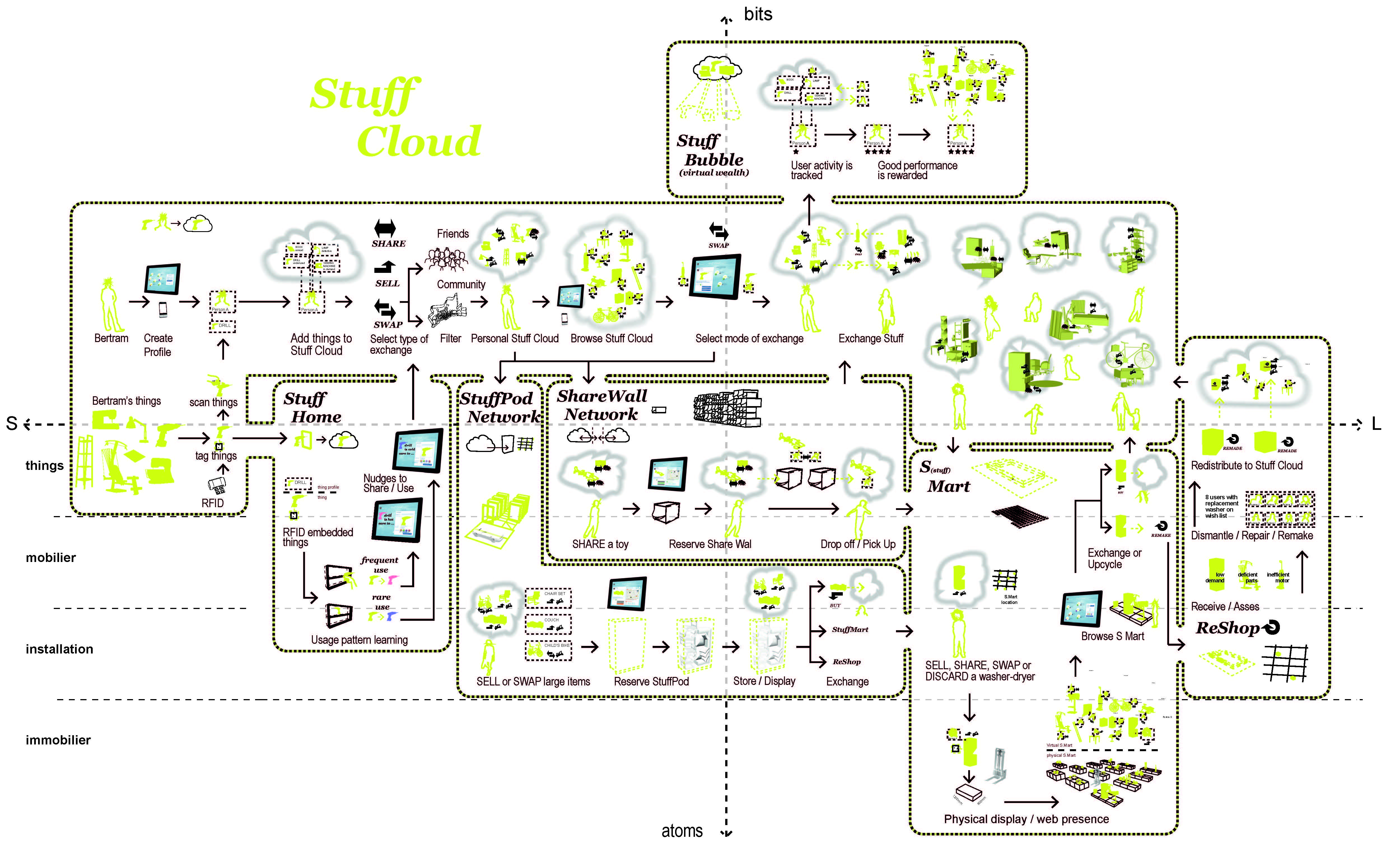16.06.19 - Alumnus Alejandro López's proposal to reduce wasteful consumption in cities receives recognition from the OAA
Cities contain a lot of stuff. If only there were an easier way to share it all — and cut down on the number of infrequently used items that fill our closets and storage spaces until they are ultimately sent to the landfill.
Inspired by an ambition to cut down on wasteful consumption, Daniels alumnus Alejandro López has dreamed up Stuff Cloud: A Smart Infrastructure for Buying, Selling, Sharing, Swapping & Remaking Things in Cities. Based on his 2011 Master of Architecture thesis, Stuff Cloud mixes "techniques taken from architecture, interaction design, and physical computing."
The proposal received an honourable mention in the Ontario Association of Architecture's inagural Shift 2019 Ideas competition.
“Conceptually, the project addresses the challenges of the sharing economy and the cultural shift away from rooms and houses filled with things," said the OAA jury. "It questions the nature of how storage could work, and how scarce resources might be managed.”
From Lopez's proposal:
The building blocks of the Stuff Cloud are the interactions between humans and their things. With a unique ID for each thing, and harnessing web-based technology, it becomes possible to simply add one’s things to the Stuff Cloud. Once your things are ‘in the cloud,’ Stuff Cloud can suggest various scenarios for use or exchange—for instance, sharing things with nearby friends or swapping things with strangers across the city. The Stuff Cloud can learn from our interactions with our things and give us insights on how to devote less mental and physical space to things we may not always want or need. This introduces new scenarios for ownership and exchange, potentially altering the way in which we exchange and dispose of things in public spaces.
As alternative modes of owning and exchanging things gain popularity, a physical infrastructure supporting these exchanges begins to take shape. This could come in the form of smart lockers, pods and large-scale pop-up shops. The cumulative result is a patchwork infrastructure that is built from the bottom-up in response to its social context and more importantly, as a result of ‘real’ versus ‘manufactured’ demand for things.



